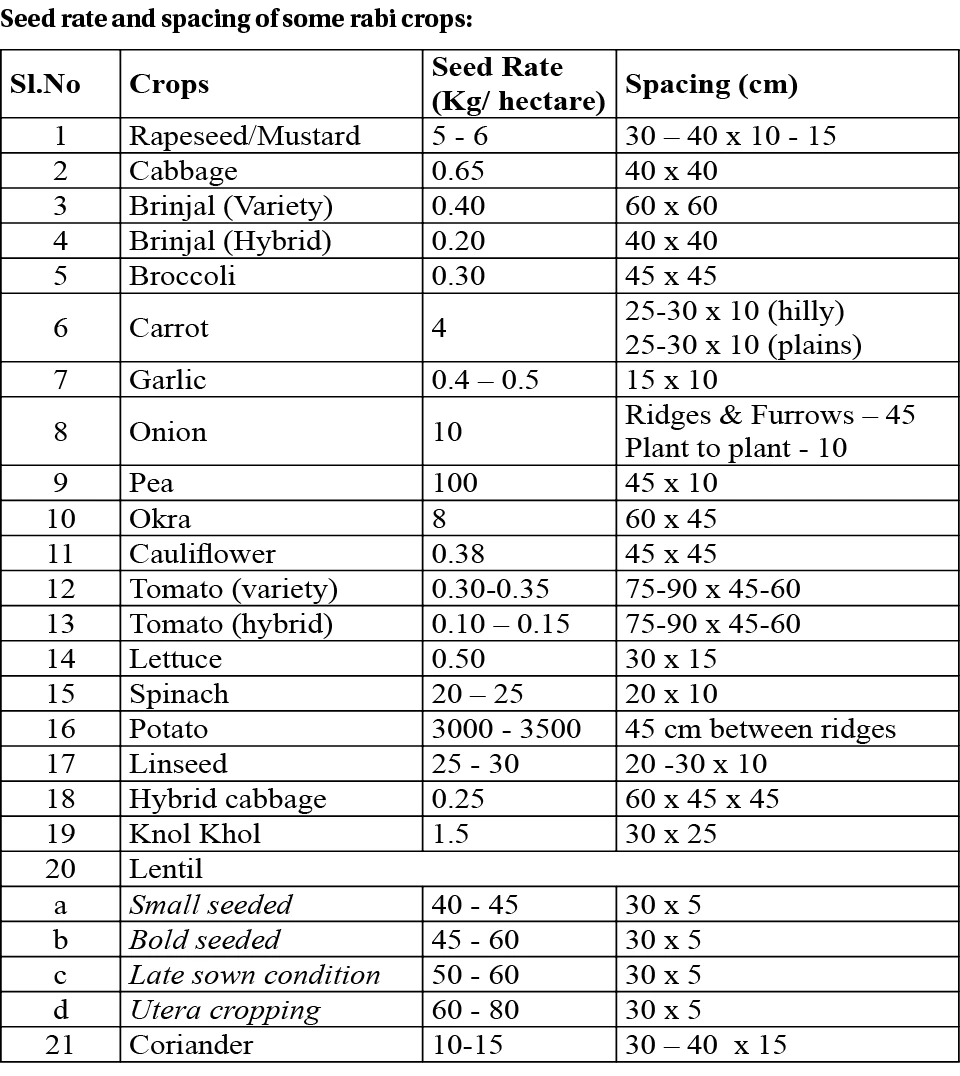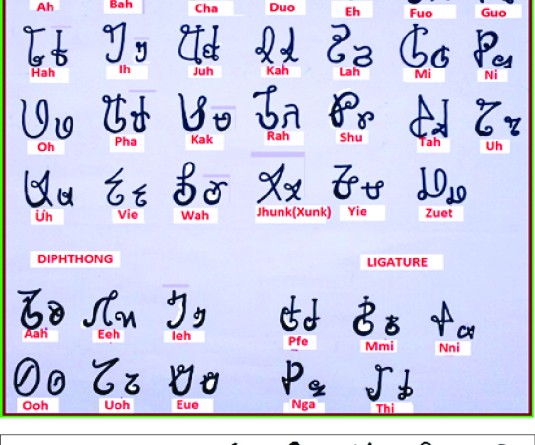
Seed rate is the quantity of seed required for sowing or planting in a unit area. The seed rate for a particular crop would depend not only on its seed size/test weight, but also on its desired population, germination percentage and purity percentage of seed.
Seed rate (Kg/ha) = Plant population (per ha) x No. of seeds per hill x test wt (g) x 100 x 100
Germination % x purity % x 1000 x 1000
The quantity of seed of any crop which is required to be sown in a particular given area of land is termed as seed rate and it differs from crop to crops, varieties and hybrids. The seed rate is usually measured in kg/ha. The importance of seed rate lies in the right selection and adoption of sowing method and also in the selection of plant species and variety. The seed rate is dependent on a number of factors which are:
1. Crop variety: There are diverse types of variety of crops namely local variety, improved variety and hybrid varieties and each one requires different rate of seeds. Hybrid varieties require lesser amount of seed rate in comparison to local and improved varieties.
2. Crop species: In general, horticultural crops require more seed rate than agricultural crops. Horticulture crops such as potato require around 300 to 350 quintals of seed/tubers for sowing in an area of one hectare.
3. Sowing type: Sowing is defined as the process of placing the seeds in the soil to germinate and grow into a plant. Seed rate varies in accordance to the method of sowing. The different methods of seed sowing adopted by the farmers are: Broadcasting, dibbling, drilling, sowing behind the country plough, planting, transplanting.
4. Seed size: With small sized seed the seed rate will be low in comparison to big sized seed. For example, the seed rate of hybrid tomato is 100 – 125g while the seed rate of potato is 300 – 350q/ha.
5. Germination percentage: Germination percentage is a major factor for deciding seed rate. Seeds with low germination percentage are sown in more quantity. Seed germination test can be performed in a small piece of land before sowing in main field.
6. Availability of soil moisture: Seed rate can be increased for getting optimum plant density when soil moisture is low.
Spacing:
Seed spacing is the distance between seeds in a given row and the distance between rows. A sufficient space between rows to rows and plants to plants should be maintained which will reduce the competition for light, will conserve water, and will provide more soil nutrition to each plant. Leaving the right amount of space between vegetable plants is quite important as each plant needs a certain amount of room for their roots and leaves to maximize growth. Not only this, but leaving enough air to circulate around and in between the plants really helps to prevent diseases from spreading, especially in wet and humid weather. There is a limitation to the amount of nutrients present in the soil. When space is maintained between plants, they can have an extensive area from which they can absorb their sustenance. Keeping the area weed-free will also allow more nutrients to be available for the plants a farmer wants to grow.
As plants grow, light will be reduced through the developing leaf canopy. This shade will slow plants down if plants are too crowded. Leaving more space between plants allow more sun and brighter light to hit expanding plants, and this will result in faster, more robust growth.

Article contributed by Dr Bendangla Imsong, ACTO (Plant Breeding), KVK Dimapur; Dr Roben Singh, ACTO (Agronomy), KVK Dimapur; Dr Ebibeni Ngullie, Senior Scientist & Head i/c KVK Dimapur




